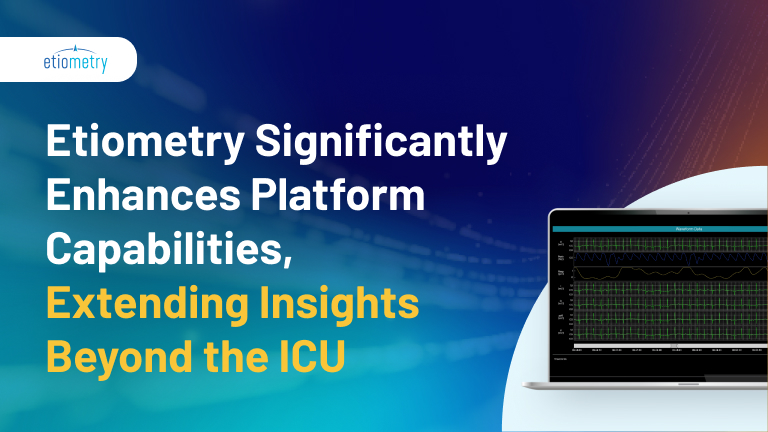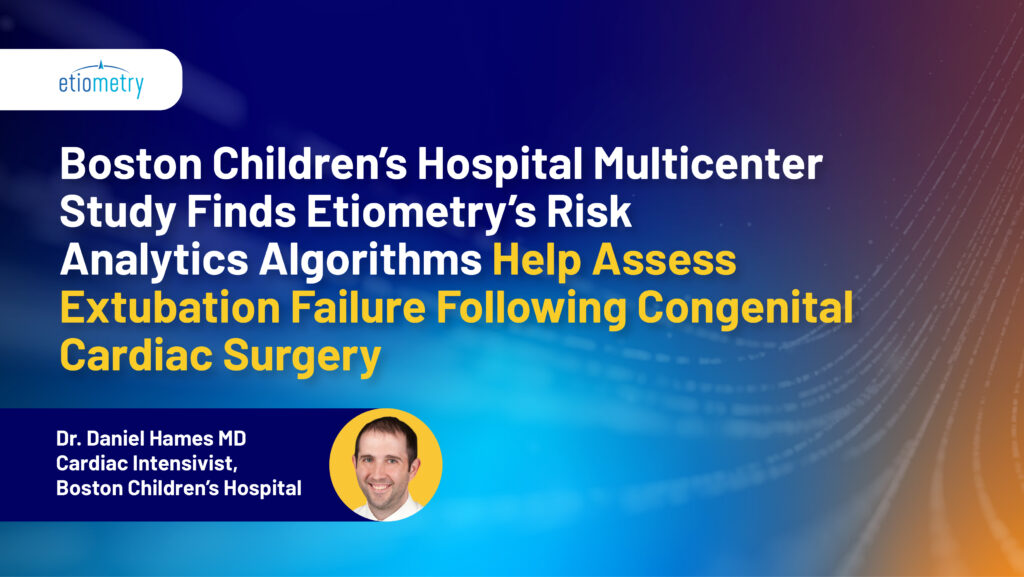How Critical Care Nurse Leaders Utilize Etiometry for Building Competency and Confidence in Newer Nurses and to Drive Quality Improvement
Blog
A heart center at a pediatric hospital treats its most critical patients in a 20-bed cardiac ICU. While the center’s young nursing staff brings passion and dedication to the job, more than half of all nurses are recent graduates with less than two years of experience. Leadership wanted to look for ways to improve internal processes to better support this staff of early-career nurses, with a goal of improving patient safety and overall quality of care.
Reducing Cardiac Arrest Rates
Leadership zeroed in on the goal of reducing the ICU’s cardiac arrest rate and established a Cardiac Code Committee to look for quality improvement opportunities. The center had already begun introducing Etiometry to the cardiac ICU in 2019, starting with embedding ten persistent displays in high-acuity bed areas and eventually expanding to 20 displays throughout the floor. Leadership reported that the Etiometry platform transformed how they reviewed cardiac events for nurse training and played a key role in improving internal systems.
Etiometry for Case Review
By improving how they used data to understand cardiac events, leaders could remove judgment from the review process and deliver more objective feedback. This provided more learning opportunities and strengthened the clinical competence of the hospital’s young nursing staff. Newer nurses were then empowered then utilize the Etiometry platform at the bedside to provide data-backed information to providers to inform treatment.
Etiometry for Quality Improvement
The center also used data from the Etiometry platform to review practices internally. By studying events, using data to create simulations and reports, and identifying how treatment decisions and workflows impacted clinical outcomes, leadership could confidently move forward in making changes that improved patient safety and throughput.
Case Study: An Unexpected Cardiac Arrest
An infant with a congenital heart defect had been in the cardiac ICU for four months when the child unexpectedly went into cardiac arrest. A very inexperienced nurse and respiratory therapist were the first to respond and began rescue efforts. Within minutes, a code team arrived and successfully reestablished ventilation. After the event, nurse educators used Etiometry to review the case and identify learning opportunities. They studied 5-minute and 24-hour data views that allowed them to understand the factors contributing to the arrest and response.
Their review found that the patient had not been suctioned regularly the day before the event, which affected respiration. During the event, they found that there had been a two-minute window during which the patient did not receive ventilation prior to the arrival of the code team. They determined that the responding nurse had left the patient’s bedside to get help. The code team then arrived and bagged the patient, reestablishing ventilation.
The nurse leaders used this data to review the case with the responding nurse and RT, discussing what happened, providing guidance, and understanding how they could have been better supported during the event. Leadership also used the data to create a simulation and conduct a process study to better understand how internal systems may have contributed. This led to interventions, including a new rounding tool to systematize how information is handed off between nurses at shift changes.
Better Insights for Improved Care with Etiometry
Five years after its adoption, Etiometry is providing essential data for the pediatric cardiac ICU. From reviewing events for staff education and training to identifying opportunities for quality improvement, Etiometry has transformed the heart center’s operations.


